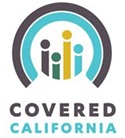
Assisters and Navigators available to lead folks through the maze of health insurance.
California’s developing health insurance exchange, Covered California, presented two webinars recently to review the streamline application process and budding Assister Program to help residents sign up for health insurance through the new state exchange.
One time roll out to millions
The task before Covered California is to efficiently process an estimated 2.6 million residents that qualify for subsidized health insurance coverage and another possible 2.7 million people without coverage or can benefit from guarantee issue insurance. They understand that because of California’s cultural and language diversity there must be several options for enrollment from on-line applications to one-on-one assistance using a paper application.
Covered California application process
The first webinar addressed the eligibility, enrollment and the use of a single application for entry into Medi-Cal, subsidized exchange plan and non-subsidized exchange plans. The behind the scenes processing issues are challenging. Covered California has to integrate state and federal regulations along with applicant’s information in a timely fashion.
Some of the issues they are grappling with beyond the initial application are:
- Disenrollment process
- Appeals process
- Annual eligibility re-determination
- Field testing of the paper, telephone and on-line applications
- Written translations into at least 12 different languages
If you have ever wanted to see the birth of a Fortune 500 company in a compressed time frame, Covered California is your case study in action.
Assisters and Navigators
The next webinar focused on the emerging Assister and Navigator programs. Assisters will be folks who, either through Covered California or an Assister Enrollment Entity, will help guide individuals and families through the process of enrolling for health insurance through the state exchange. It won’t matter if the person is Medi-Cal eligible, qualifies for a subsidized plan or standard non-subsidized plan, the Assister will help everyone.
California Diversity
Because there is a huge population of people that need to be assisted with the launch of the health exchange, Covered California is reaching out to a variety of organizations to become Assister Enrollment Entities. From faith-based organizations, nonprofits, school districts to tax preparers and unions, they can all be an umbrella organization with individual assisters underneath them. Assisters will not necessarily be insurance agents and everyone who wants to be an Assister will have to complete training.
Compensation for Assisters
For each application successful enrollment in a Covered California health insurance plan, individual or family, the entity the Assister is associated with will be paid $58. Renewals will be compensated at $25. Some organizations like hospitals and healthcare providers can not become Assister Enrollment Entities. While the initial surge of enrollment compensation will come from a federal grant, future enrollment compensation and renewals will have to come out of the Covered California operating budget. Insurance agents will be compensated directly from the health plan.
The Navigator Program, which is part of the overall Assister Program, will have compensation based on overall enrollment goals for the Navigator entity and paid out of a separate grant program. This bee hive of activity will begin to slow in 2014 when it is hoped that the bulk of uninsured in California have been matched with an appropriate health insurance plan. It is pretty inspiring to see so many civic and nonprofit organization express interest in assisting Californians getting health insurance.
Insurance agents see marketing opportunity
The eternal cynic in me raised some red flags around the Navigator and Assister programs. Specifically, I am concerned about insurance agencies, agents and brokers eyeing Covered California as a marketing opportunity. I have expressed those concerns to Covered California that no insurance agent should be allowed to cross sell another insurance product while meeting with an individual or family for health insurance.
My email to Covered California
I would strongly encourage CoveredCA to prohibit Assister Entities, Assisters or Navigators from cross selling other insurance lines when meeting with someone to enroll them in either the Medi-Cal program or CoveredCA.
As you maybe aware, Medicare as strict rules on what an insurance agent can discuss with presenting information about tax payer subsidized Medicare Advantage health plans and Medicare Advantage Part D Prescription drug plans. This has developed over years of insurance agents using Medicare Advantage plans as a means to get their foot in the door to sell other insurance products.
While folks eligible for CoveredCA will be under 65, there may still be language and educational barriers that make them vulnerable to a hard cross sell pitch.
The only types of insurance that should be discussed during a one-on-one visit or in a group setting should be the insurance offered through CoveredCA: health, dental and vision. Agents authorized to sell other lines should be prohibited from talking about those lines or using their other lines to confuse the individual.
Other insurance lines prohibited would include, but not limited to:
- Life
- Accident
- Hospital indemnity
- Car
- Home
- Annuities
Call me a cynic, but I can see insurance agencies signing up to be Assister Entities, Assisters and Navigators as a means to pitch their other products. I can already see the marketing pitch-
“The CoveredCA plan is great, but what about a FLAK indemnity plan to help cover the deductible?” or
“Instead of buying the pricey Platinum Plan, get the less expensive bronze and buy hospital indemnity insurance to cover the deductible.”
The financial incentive for the CoveredCA plan is negligible compared to the compensation the agent or agency would receive from the more lucrative indemnity plans or other lines of insurance.
Don’t let the insurance guys game CoveredCA and turn it into a market tool to reach prospective clients for their other lines.
Big Challenges for Covered California
The challenges for a smooth roll out of the Covered California health insurance exchange are numerous. With many dedicated and committed organizations and nonprofits spreading the news and assisting with enrollment, bureaucratic nightmares should be minimized.

